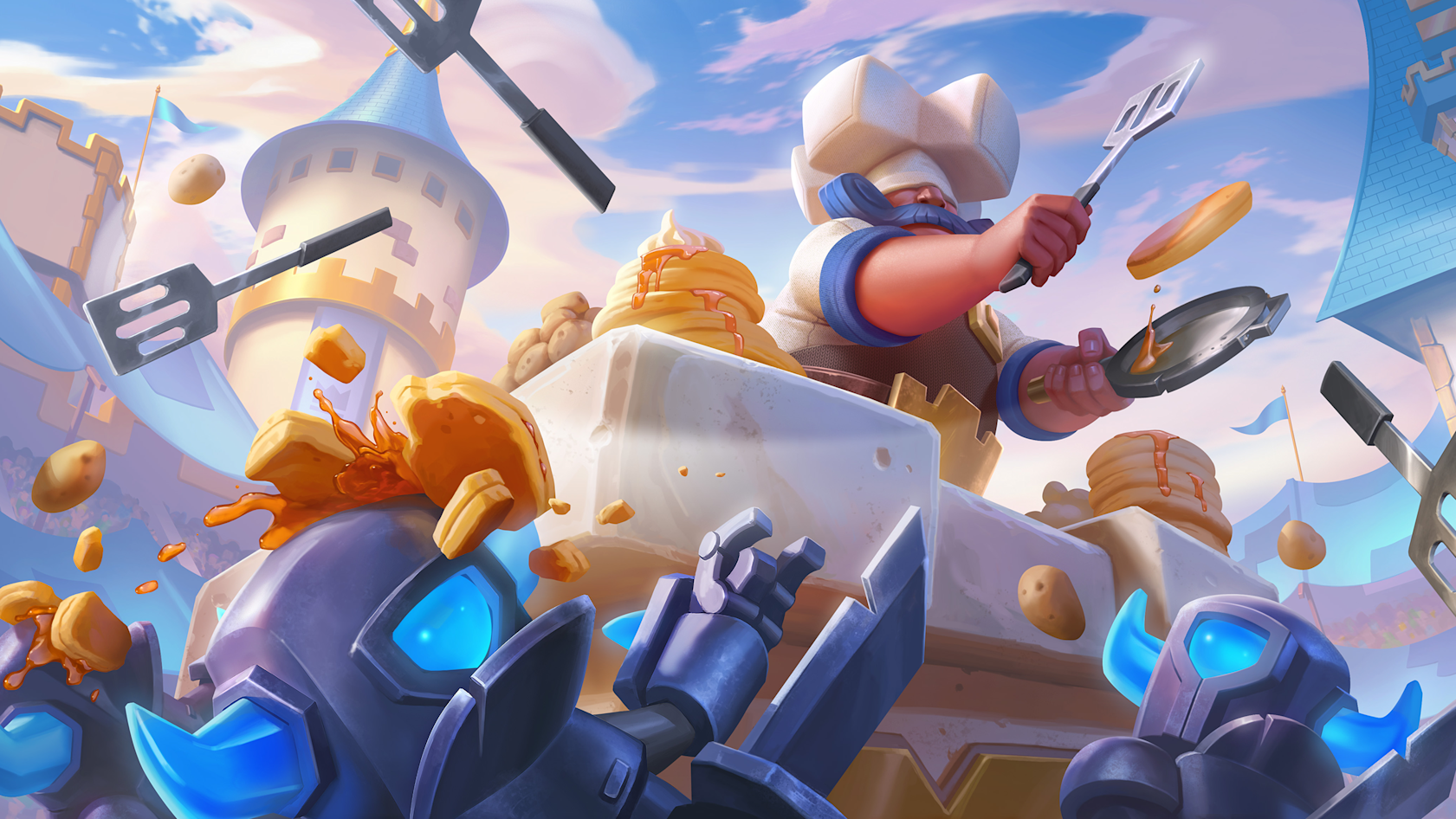
In for the Forever Game
This spring 15 years ago, we founded Supercell to create great games that as many people as possible play for years and that are remembered forever. Big, bold dream inspired by companies such as Nintendo and Blizzard. We obviously have a long way to go to get there. But for us to even have a shot at it, the most important thing is to always think long-term, staying focused on the work and not on the outcome. Or, as they would say in sports, don’t look at the scoreboard but focus on your game.
This has never been as hard as it was in 2024.
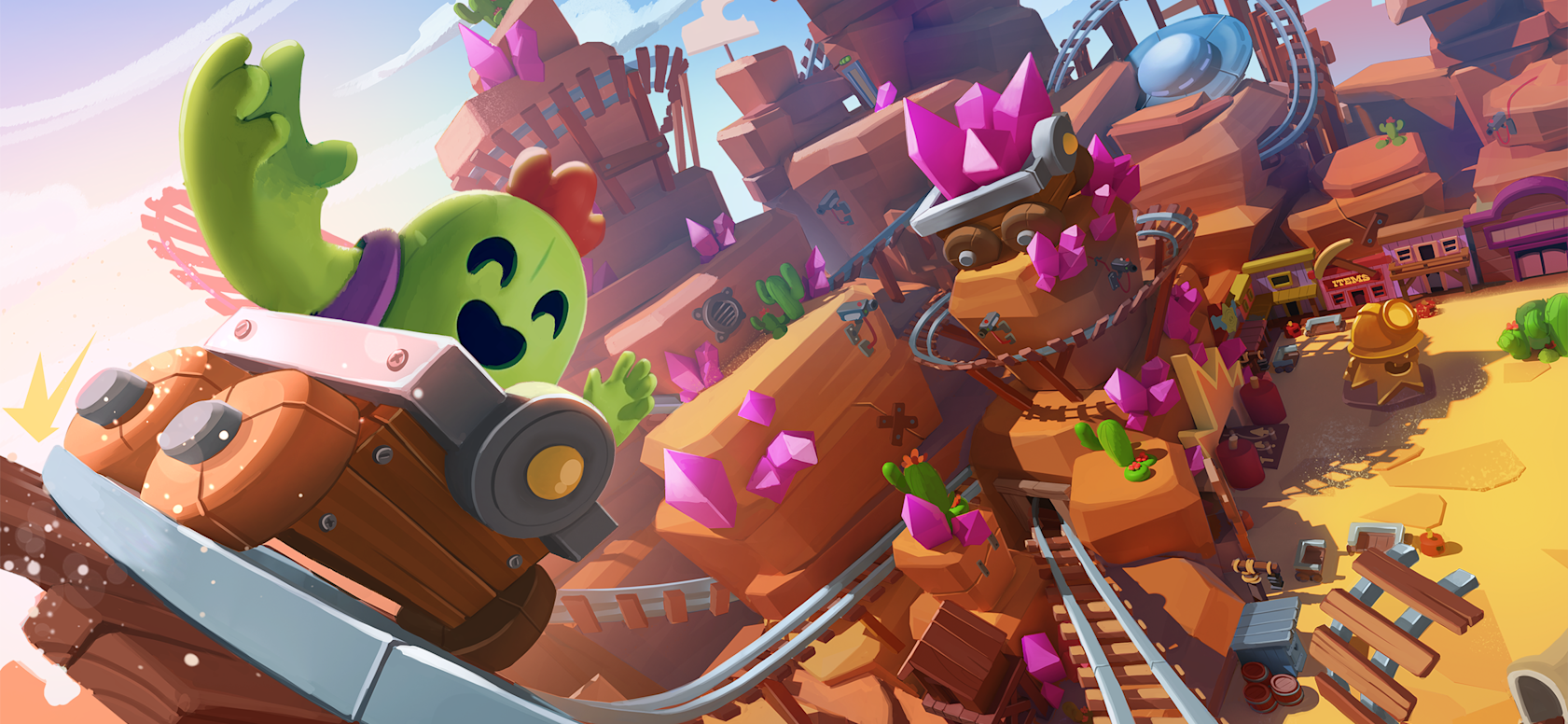
The past year was a rollercoaster – the good kind of. We had some unprecedented successes and unprecedented challenges. Of the many achievements, failures, risks, and lessons at Supercell that highlighted 2024, two games stand out.
On one hand, Brawl Stars exploded by every conceivable metric, like I have never seen before in my entire career. Brawl Stars is a great example of what is possible to achieve even with a relatively ”old” live game when all stars align. It is also the latest example that it truly is possible to create forever games, and the best games never get “old” if you keep them fresh by constantly making them better for the players.
On the other hand, our first new game launch in over 5 years, Squad Busters, despite generating gross revenues in excess of 100 million dollars during its first 7 months in 2024 and winning the Apple Game of the Year Award, has not yet scaled up to the game team’s (or Supercell’s) aspirations – a disappointing, but energizing truth. Squad Busters is one example of the challenge of launching new games today at Supercell and, I believe, across the industry.
By many metrics, 2024 was the best year for Supercell ever. Among other things, our live games hit over 300 million monthly active players worldwide. For the first time since 2014, all of the games grew by revenue compared to the previous year. Also, we had a record year in terms of gross revenue.
What is extremely inspiring for me is that it was the best year, despite the fact that there were so many things we could have done better and what I believe we can do better in the future. That’s why I am convinced that the past year won’t be the best year we’ll ever have, and the best days are still ahead of us!
Anyway, let’s take a deeper look at the rollercoaster that was 2024.
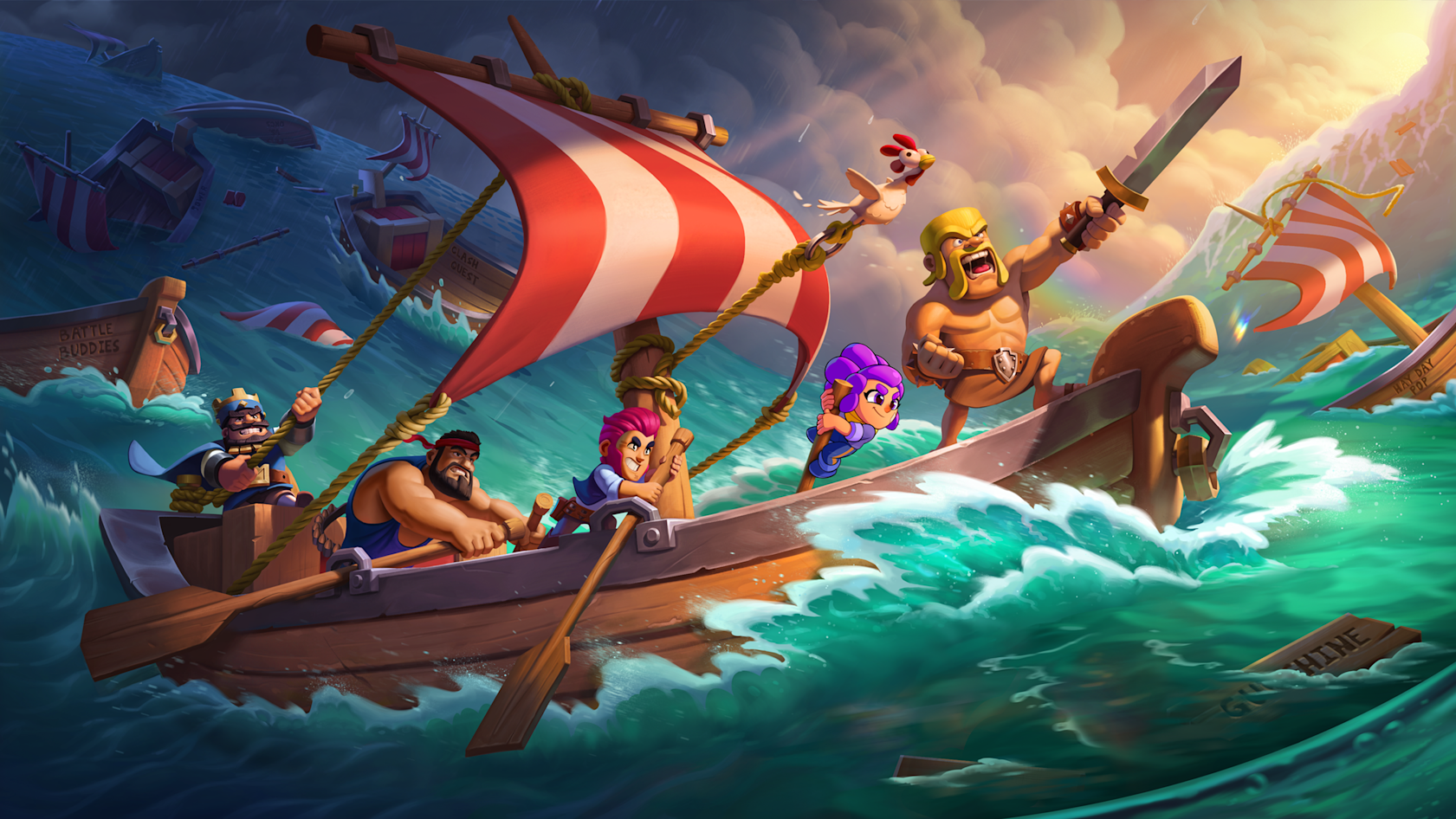
Never Seen Anything Like This
People who know me well often tell me that I can be too positive and only see the bright side of things. Well, sorry I guess, because here I go again: Brawl Stars’ performance this past year has been HISTORIC. I have worked in games for 25+ years and I have never seen a game, so many years into its life, grow like this. Brawl Stars doubled, tripled, quadrupled (and more) its metrics, especially players, engagement, and revenue.
The obvious question, which many have asked me and others at Supercell, is what did you guys do to make this happen? How on earth can an “old” live game (5+ years post global launch) see such growth?
First of all, I want to make it clear that I had nothing to do with Brawl’s success last year.
The best moments for me here, which I call “Supercell magic,” are the ones where something great happens and 1) I had nothing to do with it and 2) I am the last one to hear about it. Brawl’s success is a great example of a moment like this. Let me explain why.
At the beginning of 2024, our leadership team established a few annual goals/priorities. Related to how we scale up our live game teams to meet player demands, we put our focus on Clash of Clans. Clash was, after all, our biggest game by a significant margin, so this made logical sense. We asked the recruiting team to prioritize Clash’s hiring needs and put most of our time/focus on Clash.
The irony is that despite not getting priority from the leadership team and the company, and having the least ambitious growth targets, Brawl was the game that grew the most. I guess I should not be that surprised, and in the end all of this has definitely made me happy to again feel like the “least powerful CEO.”
Brawl Stars is perhaps the best recent example of why I believe our model of trusting the game team 100%, giving them complete autonomy/independence, and being patient and thinking long term, can yield some very unique results when all stars align.

How did they do it? Better ask Frank!
So all credit about Brawl’s growth goes to the team. So what did they do? I slacked Frank Keienburg, who leads the Brawl team, to ask his thoughts for this blog post.
My chat with Frank started with the obvious: the impact of scaling the team. Before I get to our discussion, let me give you some context.
In the past 2 years, we have significantly invested into growing our live game teams. Brawl team was in fact the first one of our teams that got into a bigger scale. Although I should probably point out here that at Supercell, the word “big team” has a different meaning than in many other companies. For us, “big” means a team of roughly 60-80 people. This is in stark contrast to the live game teams that we hear can be size of 500+ people in some other companies. Anyway, we were nervous (and for a long time, hesitant) to grow our live games to this size because we worried it would bring in too much process, middle management, and bureaucracy.
Some two years ago, we were finally able to get over our fears because we realized that these larger teams would enable us to do more and better content for the players (better late than never, I hope!). And, very importantly, we felt confident we could do all of this without destroying our culture with unnecessary bureaucracy. We would do this by doubling down on our culture of independent teams.
So that’s the context. Now back to my discussion with Frank. He pointed out that the biggest benefit of a bigger team for them has been the ability to work on multiple things and how it impacts what kind of risks they can take. It all adds up to a better experience for players. Here’s how Frank put it:
“Always going for the biggest ideas meant in practice that we shipped 2-3 big features per update, each with a 50:50 chance of being successful. Now we still take some of these big bets every update, but we also made space for a series of smaller ideas that maybe have a 90:10 chance of being successful, have the potential to incrementally improve the game, but likely don't have the same potential downside. Essentially it's about a better balance for risk taking. Predictability in outcomes vs. potential (and risk) of big ideas. The team is fearless today, but not reckless.”
We also discussed the impacts of Brawl’s conservative growth goals and of not being the explicit top company priority. This is how Frank thought it influenced the team:
“Involved team + less pressure = higher levels of creativity, high appetite for risk-taking, better decisions → better updates = win players’ trust and their time”
His input certainly gives me a lot of thoughts on how we should set priorities and targets for this year 🙂.
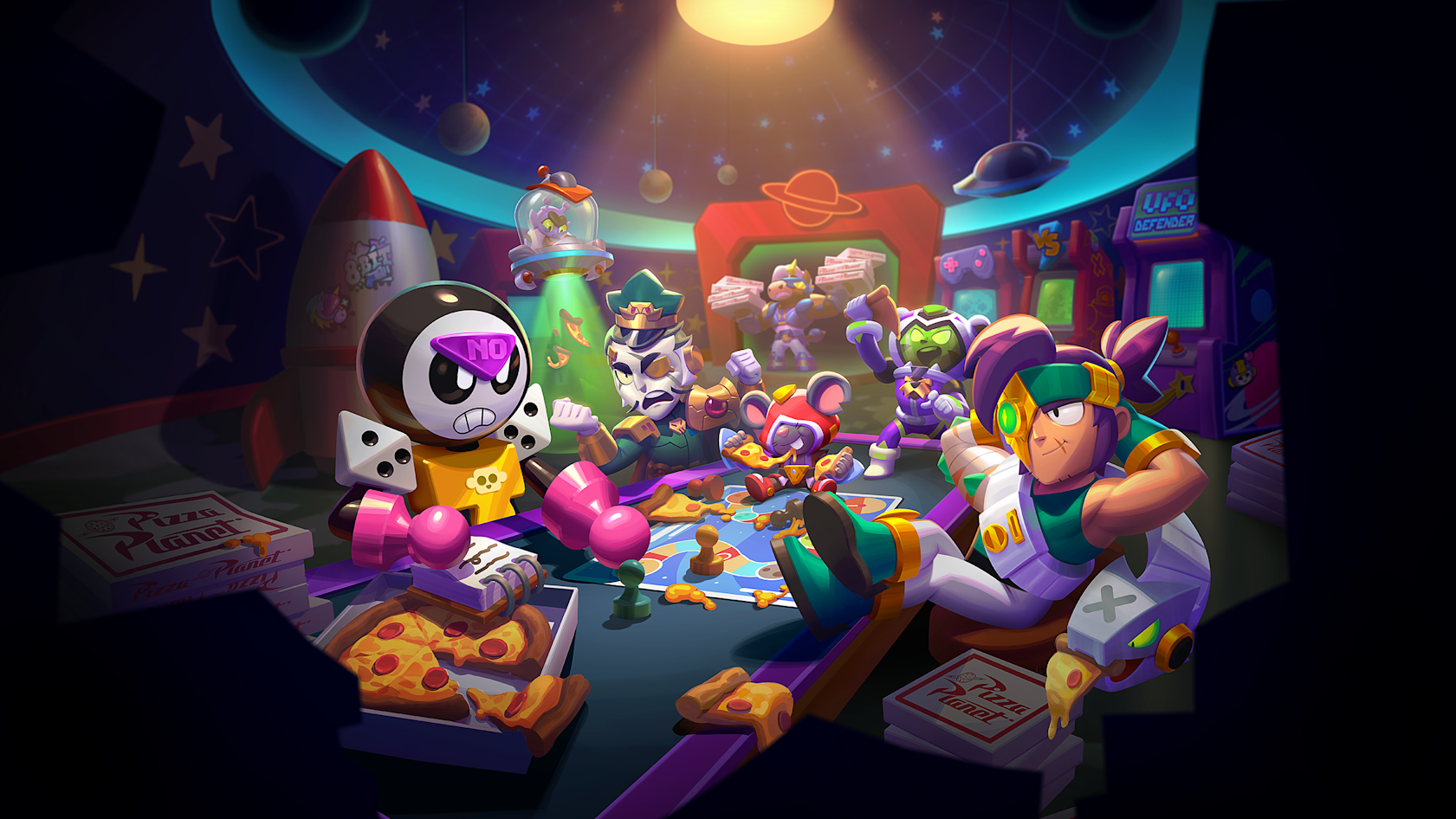
So given the enormous, historical success of Brawl, what should we expect from Brawl in 2025? Here’s what Frank had to say:
“Brawl Stars is a game that's far from perfect. The team and I have a long laundry list of things we'd like to do and we have so many opportunities that we want to explore. And we want to do this by listening even more to our players and by shipping even better content for them - and of course by learning from our failures. On our list:
More and better content that the players want!
Improved technical quality
More love for some regions that we didn't support much before, including live events”
It is very inspiring to me and everyone else at Supercell to see the team being so player-obsessed, and how humble yet ambitious they’ve stayed despite all the success this year. They understand that while these wins are amazing and matter a lot, we are playing the forever game and need to keep continuously exceeding our players’ expectations.
Brawl Stars’ outstanding year overshadows an important achievement: each of our other live games also grew in 2024. As I said, this is the first time this happened since 2014! I might be even more proud of that fact! In true Supercell fashion, each game team achieved this in their own way. And each of them took a different path. That makes sense because each game, community, and team are totally different from one another.
This is one of the reasons we believe so strongly in the game teams’ independence. Each game is completely different. That doesn’t mean we don’t try to learn from all of our teams and from those outside Supercell. On the contrary, we have this habit of celebrating failures (and especially the learnings from these failures) with champagne. We do this to create an environment where people feel completely safe to take big risks, and of course to learn from our mistakes.
We do not want to repeat our mistakes, we want to make new mistakes!
The way we approach risk-taking and failures (which most certainly go hand-in-hand), is a cornerstone of our culture. More on that in the next chapter.
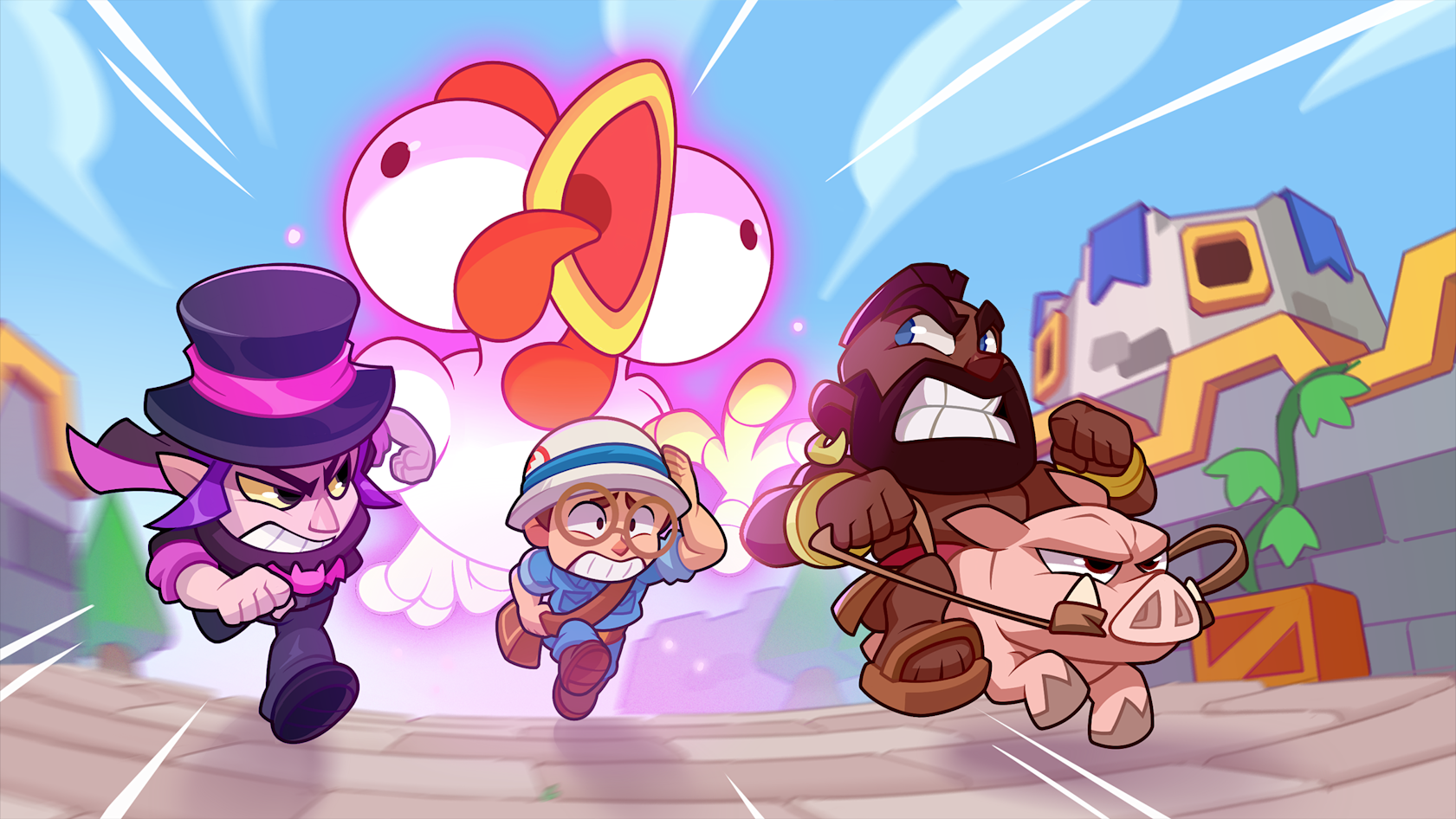
Launching new games is hard (no shit, Sherlock)
The other Supercell story of 2024, was of course Squad Busters’ launch, which is still very much work-in-progress. Lots of different aspects to reflect on.
The first thing worth talking about is to acknowledge that mobile games is one of the most competitive industries worldwide. It is very hard to break through with a new game. This is because players are still loving, playing, and spending their money on fantastic games that have been around for years. I’m extremely grateful that some of these are Supercell games. As an example of this dynamic, Newzoo’s 2024 Global Games Report stated that over 60% of playtime is spent on games 6 years or older. New games account for less than 10% of playtime. Matthew Ball’s more recent The State of Videogaming in 2025 presents similar data on slide 35 for mobile and 97 for PC.
I can’t think of a clearer picture that shows that launching new games is harder than ever. It has become so hard that some companies (or so I have been told) have essentially given up on creating new games, and will just try to seek to buy them when they get to scale. This is not us, we believe that creating new games is an essential part of a games company. We certainly aren’t giving up either on Squad Busters or new games in general -- and neither are great developers around the world! New great games are still coming out from Marvel Rivals to Black Myth Wukong, but new game teams have a tall order to pull players away from other great games that have become an integral part of players’ social and entertainment lives over years. In addition to that, games are facing increased competition over peoples’ free time. Perhaps to repeat myself, it’s really, really hard, and we hold ourselves to a really high bar — sometimes that means ending development of something great (like with Clash Mini last year), as the team thinks they would be able to have more impact elsewhere.
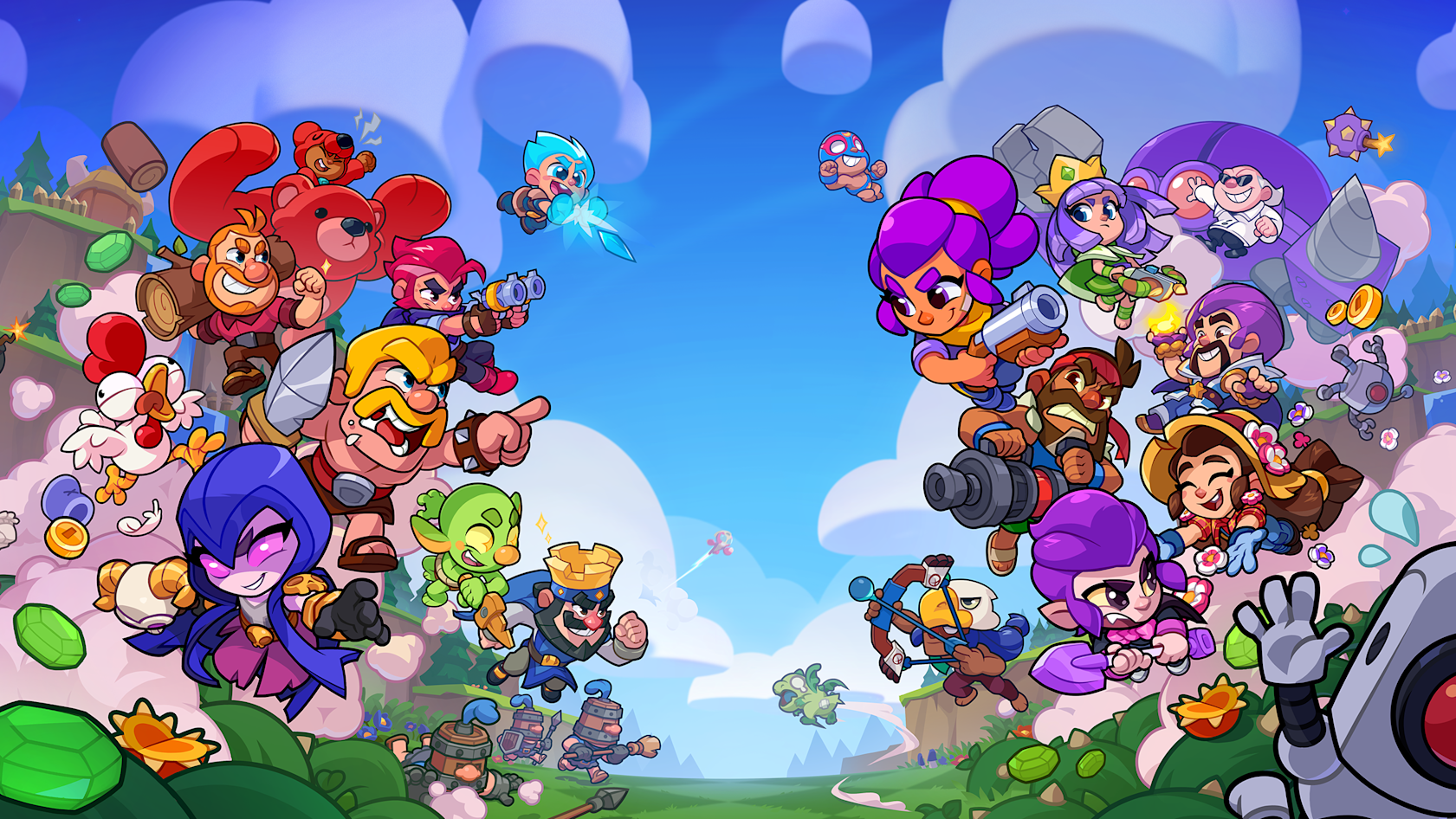
So what made us launch Squad Busters? And in particular, why did we not test it for a longer time? I have been asked this question internally at Supercell and externally as well. Similar to sharing some of my Brawl discussions with Frank, let me share some highlights from my exchanges with Eino Joas, who led the Squad team through the launch. Here’s what he said:
“We had good early metrics from 120,000+ players in the most recent closed beta. Squad was consistently the favorite new game among our creator community (we regularly share our games in development). Our partners Apple & Google were very excited about the game. Finally, it had been 5+ years since launching Brawl, and as a company we really wanted to ship a great new game. We wanted to make sure we do not fall into the trap of “analysis paralysis,” and wanted to be bold, and take risks. We believe that taking risks is a critical part of Supercell culture. We do not want to become a company that is so tied up with success that we don’t dare risk failure.”
Eino’s last point is important to me and reminded me of one of the many discussions that preceded Brawl Stars’ launch in 2018. At the time, it was Supercell’s longest-running Beta (500+ days). I’ve shared publicly, many times, that the team actually almost killed it before launch. When we ultimately decided to launch it though, I remember talking about it with a group of company leaders and team leads. We talked about how we might need to take a risk that Supercell hadn’t taken before, in launching a game that we weren’t certain about. We talked about the risks and potential actions we might need to take if launch didn’t work out well. It worked out pretty well, after all, but required a lot of patience, hard work and luck to get to where the game is today!.
Before Squad, Supercell had a 100% success rate of launching new games globally on mobile, if the definition of success is more than a billion dollars of life time gross revenue , which is what the previous five launched had done (and a lot more). That of course sounds great, but sometimes I’ve wondered if this 100% success rate also means we are not taking enough risks. Why are we not failing? Could there have been games in the past that we in fact should have launched but did not because we were afraid to fail?
What I am trying to say here is that launching new games at Supercell is not an easy decision because it is so hard to tell what will happen when you get to scale. There is always a risk involved. Even if you have a pretty significant amount of players playing the game in various test phases (as Eino said Squad had more than 120,000 players), you never know what it will look like when you get to a scale of tens of millions. So it is always risky, and I’m proud of the team for wanting to take that risk. For us to get closer to our dream of creating games that are remembered forever, it is extremely important that we continue to take this type of risks and I am proud that the Squad team led the way. Without risk-taking, we will not create new outlier successes. We should not think of risk as a chance for failure but as a chance for outlier success.
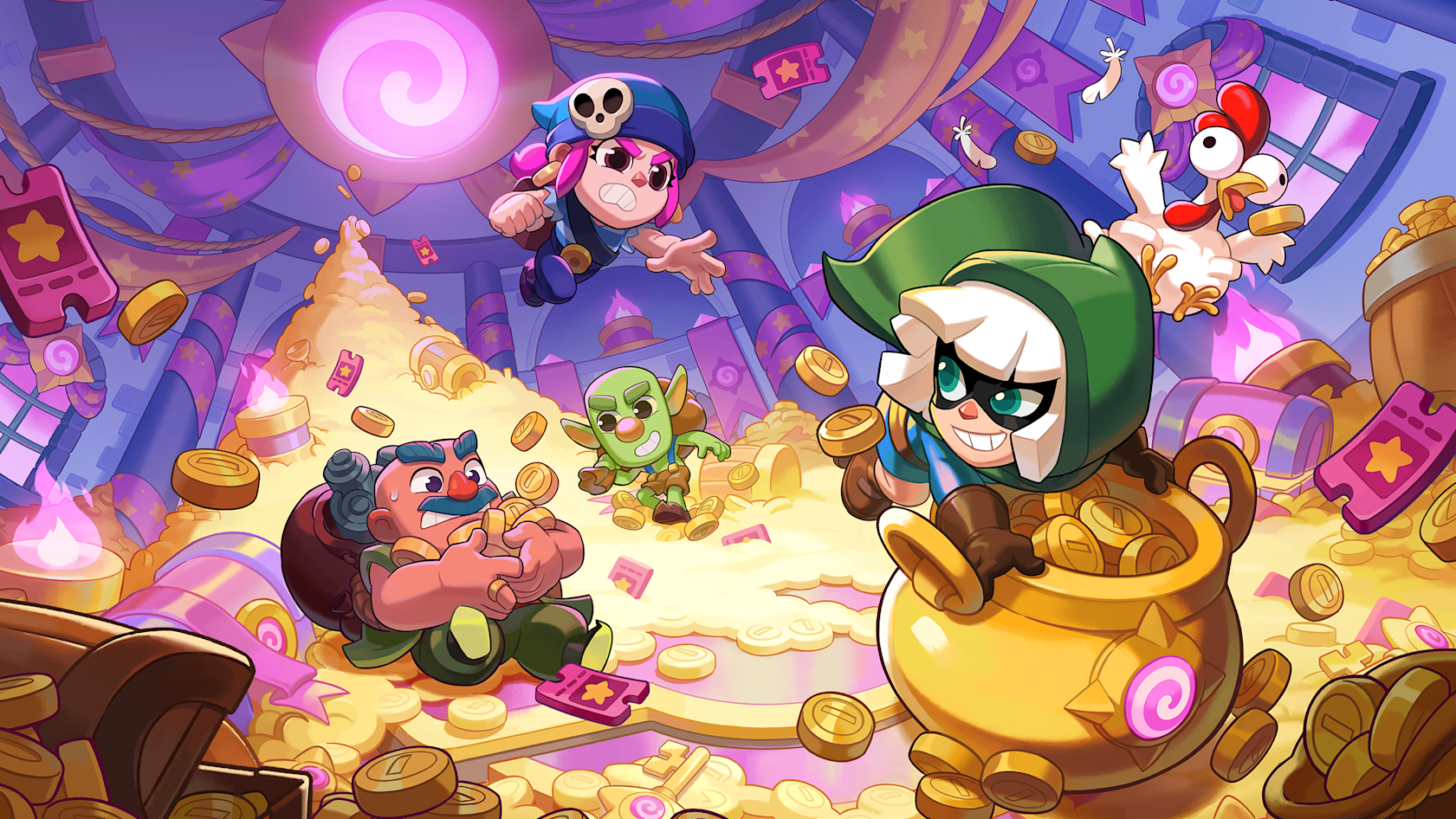
How do we think about the launch now? Here’s Eino again:
“Although in hindsight there are many aspects of the launch we might have done differently, we still believe overall it was the right call to ship the game. Our initial goal, as always, was to make a game for the broadest possible audience. And while we succeeded in getting a huge audience interested in the game, the audience mix ended up being quite different to what we originally had imagined. Trying to make a game that appeals to everyone ended up it not being perfect for anyone. Casual audiences have a hard time finding it since it looks like a battle game, something they are not naturally drawn to. For mid-core audiences the game appears too simple, easy, lacking depth and feeling that it is a skill-based game. In truth, the game has quite a bit of depth layered in, but that depth only starts unfolding after playing for a longer time. Soft launching the game globally and taking more time with it perhaps would have given us indication of the true audience and what they want — or perhaps not. We will never know.”
I don’t believe there is a reliable, scientific recipe for creating new games or launching them. I appreciate Eino’s candor about the team’s learnings and our collective mistakes along the way – all of which, in true Supercell fashion, he and the team have openly shared with everyone in the company. And more than anything, I am extremely proud of the entire Squad team. They’ve worked tirelessly for many years to get the game where it is, and their ambition and willingness to take risks to reach that ambition is very inspiring to me.
Despite the challenges, Squad grossed more than 100 million dollars in 2024 after being launched at the end of May. But what’s next for Squad? Here’s Eino:
“Launch of a live service game is just the beginning of a long journey. Brawl is a great example: it took us 6 years to get where it is today. It’s still very early days for Squad, and the good news is we now have a much better understanding of who this game is for and can use that knowledge to steer development. We have a healthy appetite for making bold changes to get where we need to go, and the team is now working on a very big update that will introduce major changes to how the game plays both in battles and outside of them.”
What Eino doesn’t share here, but he and other leaders on Squad have shared with the company, is how high their bar is for improving Squad in the next year. The game team isn’t satisfied with Squad Busters and they are vigorously working towards changes, many of which will introduce fundamental changes to the game, changes that we believe the core audience will like. Again, this is where I love feeling like the “least powerful CEO.” The team set the goals, the timelines, and their plans. Will everything go according to plan? I’ve worked in games long enough to say probably not. However, it’s easy* to trust ambitious teams, who recognize mistakes, who aren’t (ever?) satisfied with their work for players, and who set their own goals to improve. This is how I felt about Brawl team at the time, and this is certainly how I feel about the Squad team.
*Note: nothing is ever “easy” in making & operating games!
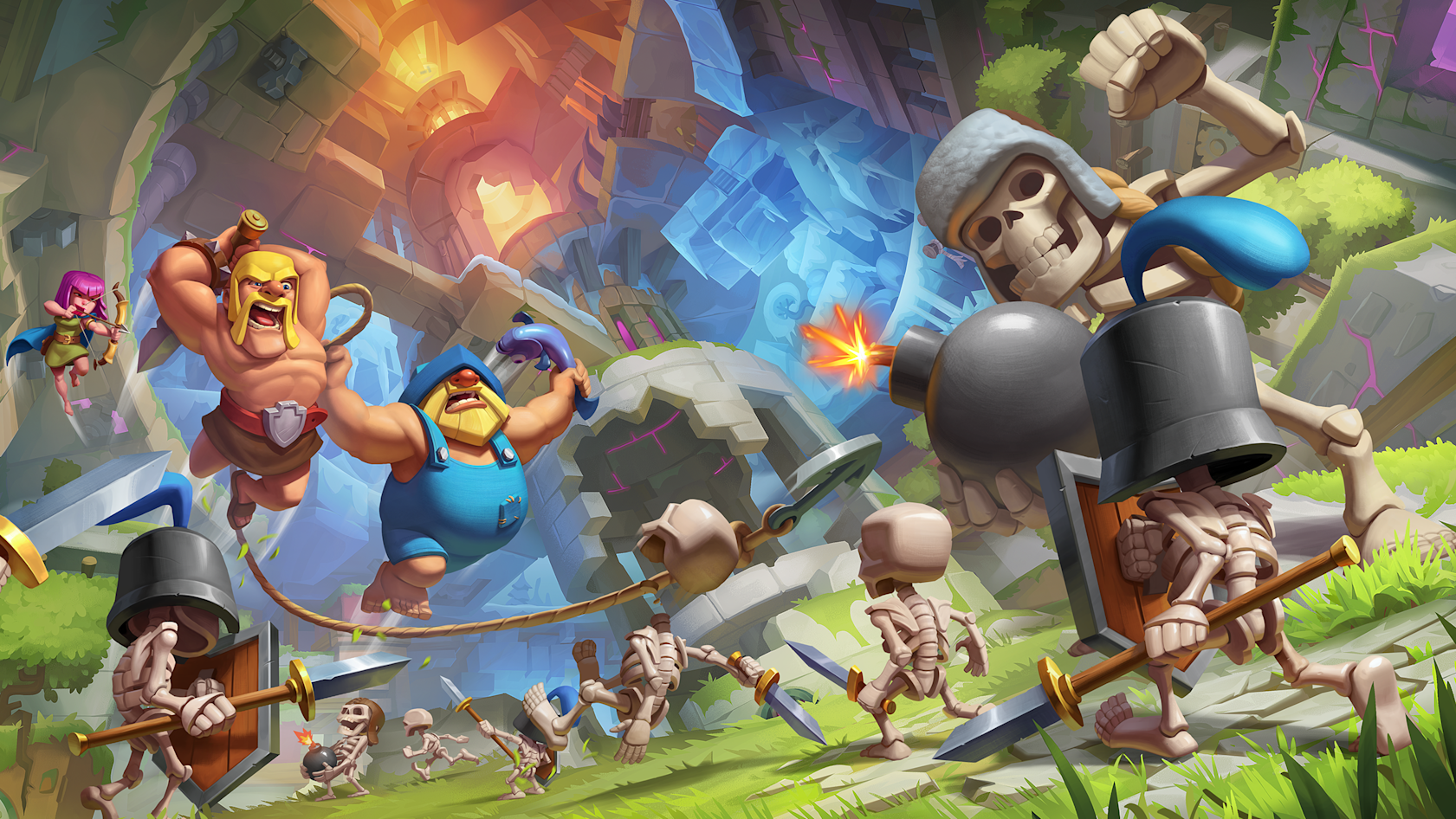
Spark: Brewing Startups that Create New Forever Games
One lesson that can’t yet be drawn from Squad’s launch is how our overall approach to creating new games is evolving. Last year, I wrote about new game teams operating like startups within Supercell. I’m sure some people would love to hold Squad Busters’ launch up against that effort, but it just wouldn’t be accurate. Squad Busters’ development started in early 2020, based on a canceled project that started even earlier than that. Our latest new game teams as startups, formed just in the last year or so. So it will take years for us to see the true outcome of this approach.
Honestly, it has not been easy for our new game teams to emulate “startups” within an established, successful company like Supercell. We will continue to push on this front, but it has already highlighted the importance of the original “founding” team.
We believe in greenlighting teams, not games.
We believe this because you simply cannot know how successful a game will be, but what we do know is that a great game will not be built without a great team – so let’s focus on the team, not on the game idea itself. This is why we created the Spark program, the industry’s first team incubator, to invite some of the best talent in the world, including those who do not yet work at Supercell, and try to form the best teams out of them. Our goal is to become the best company in the world in creating new game teams, and also be the best place for these teams to build their game.
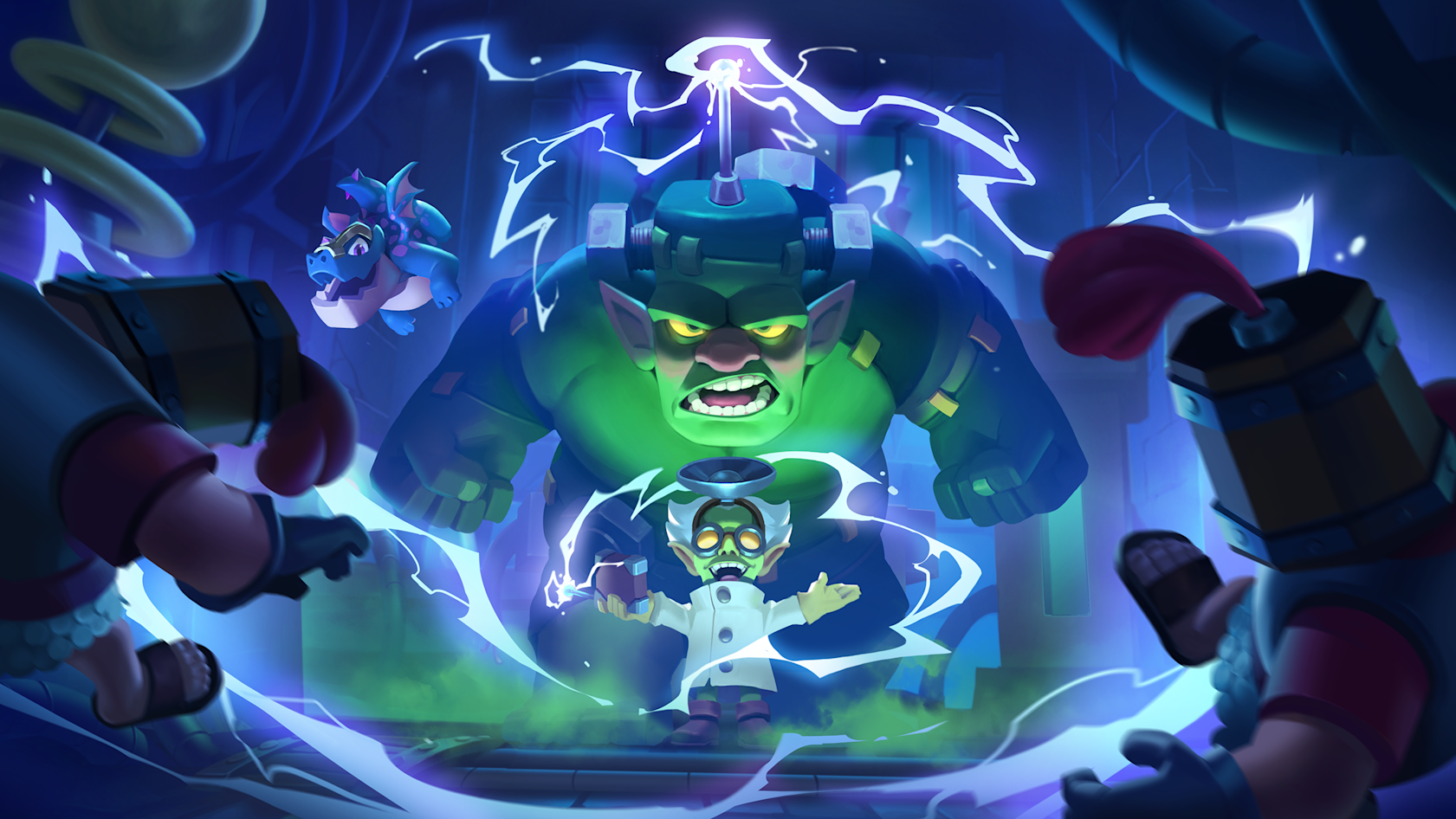
Spark is a program where exceptional talent (Supercellian or not) goes through game jams & rapid prototyping with the support of a professional sports psychologist and the program lead, to pressure test which teams should take on the challenge and opportunity of developing a new game at Supercell. Again, very importantly, we do not greenlight the games or prototypes that these teams build during the initial phase of Spark. Instead, we use this time to evaluate the teams, and if we feel that the team is as good as the best teams in Supercell, we greenlight the team. After the greenlight, the team is free to build the game they want to build, the way they want to build it. They become one of Supercell’s new game cells.
Given that we give complete independence & responsibility to game teams old and new, I sometimes wonder why it took so long for us to have a program like Spark for intentionally/systematically identifying, evaluating, and kicking off new game teams. Now it feels so obvious.
We have now completed two cycles through this program and we will continue the program with another cycle soon. 30 developers have gone through the process and we have kicked off 5 new game teams out of this program. I’m excited about these 3 new teams that came through the Spark program with the latest round.
We’ve learned a lot already. Among the most important learnings:
First, it seems truly possible to form really great teams in this manner. Something that we have found very valuable in this process is the idea of constraints. Forcing the team to build something with very limited resources in a very limited amount of time is a great way to see what teams are truly great. Diamonds are created under pressure, and the same seems to be true with great new game teams.
Second, external perspectives, ideas, and energy are immensely valuable. They bring different creativity, hunger, and ambition to create something at our scale, and do not have the burden of our previous successes (that we are very proud of!) It has encouraged us to push ourselves even further and reject any sense of complacency.
Third, great teams can take very different shapes and forms – there is definitely not just one archetype of what makes a great team! That’s an important thing to recognize and I believe one of Supercell’s strengths is that we embrace these differences rather than trying to force one central process on everyone.
These new teams of ours have the hardest road in front of them. The journey they have already gone through, including intense hackathons, building prototypes together, shuffling the teams, and receiving a ton of feedback, has not been an easy one. And it will only get harder from this point on :) But it will be an exciting journey and even if the odds are against them, only the sky is the limit in our culture of independence, responsibility and risk taking. I can’t wait to see what these teams build for players!
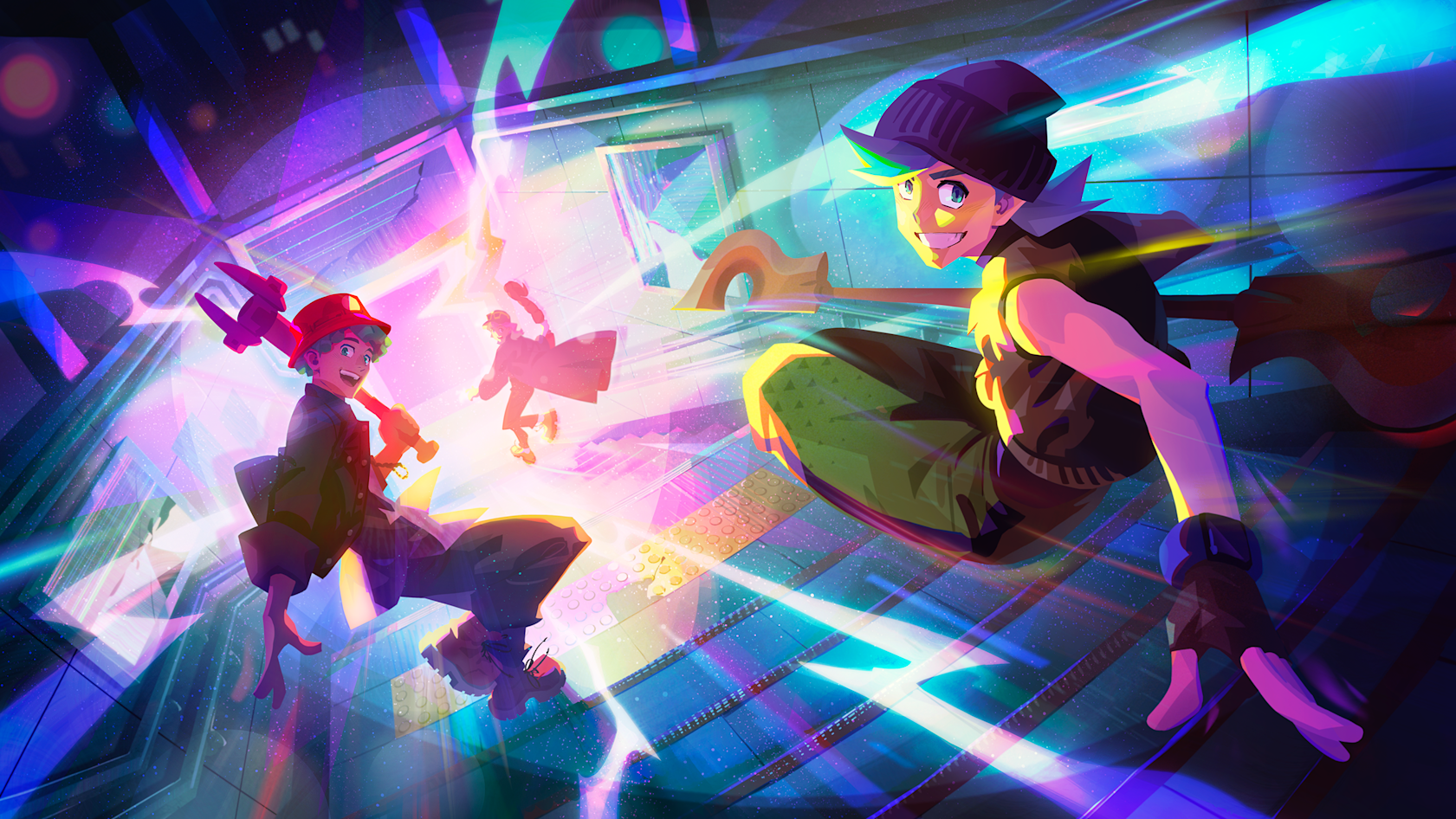
Looking ahead
Brawl Stars’ growth shows what’s possible when everything comes together for a live game. All of our live game teams continue to focus on bringing more of everything for players and improve the overall player experience. Whether it’s a new IP collab, like SpongeBob, or just a way to simplify a game that has gotten more complex over time, each of our teams will continue to bring new & different for new and existing players.
Squad Busters’ launch shows just how hard it is to launch a new game today, at Supercell or across the industry. Even so, there’s still a lot to be excited about. As Eino shared, the team is working on big changes to the game that give players more agency.
mo.co is a monster hunting startup we've invested in, and they’re about to… well, you’ll see soon enough, I suppose.
Project R.I.S.E. continues to test and evolve the game, and players should follow the game on X or YouTube to hear about future chances to play the game and provide valuable feedback to the team. As always, there’s more floating on the horizon and I can’t wait for players to play what our teams are building around the world.
I could not be more excited about all of those things that I mentioned above. We will make our live games better for our players, and will also bring new, innovative games for our players to try. Taking risks and bringing new innovation to the market is critical for our industry as we search for those new “growth drivers” that Matthew Ball spoke about in the report.
But there is also something else in my mind. It is a memory from early 2012.
Thirteen years ago, I recall showing Hay Day and Clash of Clans on iPad to developers and leaders in our industry, who we considered to be the best in the world. Roughly speaking, their reaction was “why would anyone play that?” “Are these even real games?”, they would add. They didn’t believe in a very different experience on a very different platform. They couldn’t see it. What gave us the conviction to continue on our path were the overwhelmingly positive reactions of people, who did not work in the video games industry.
Recently I’ve wondered if we are about to experience something similar, mainly motivated by the development of new AI & related technologies, But this time, I have noticed asking myself a big, motivating question:
Are WE those disbelievers now??
Are WE at risk of being unable to see a new disruptive gameplay experience, development method, distribution method, or business model?? The honest answer has to be YES, we definitely are at the risk of that.
There must be 100s of teams/companies out there betting their whole existence and all their efforts on disrupting us and other “incumbents” in our industry. For companies like Supercell, it’s critical that instead of letting others disrupt us, we need to be the ones who disrupt ourselves. We cannot allow ourselves to be as closed-minded as the incumbents who ignored what we were doing over a decade ago. Instead, we need to have an open and curious mind, and boldly try new things. I am very excited about the prospect of investing our time and efforts into taking new, scary risks, and can’t wait to DO something in this space. Exactly what it is? Too soon to say. :)
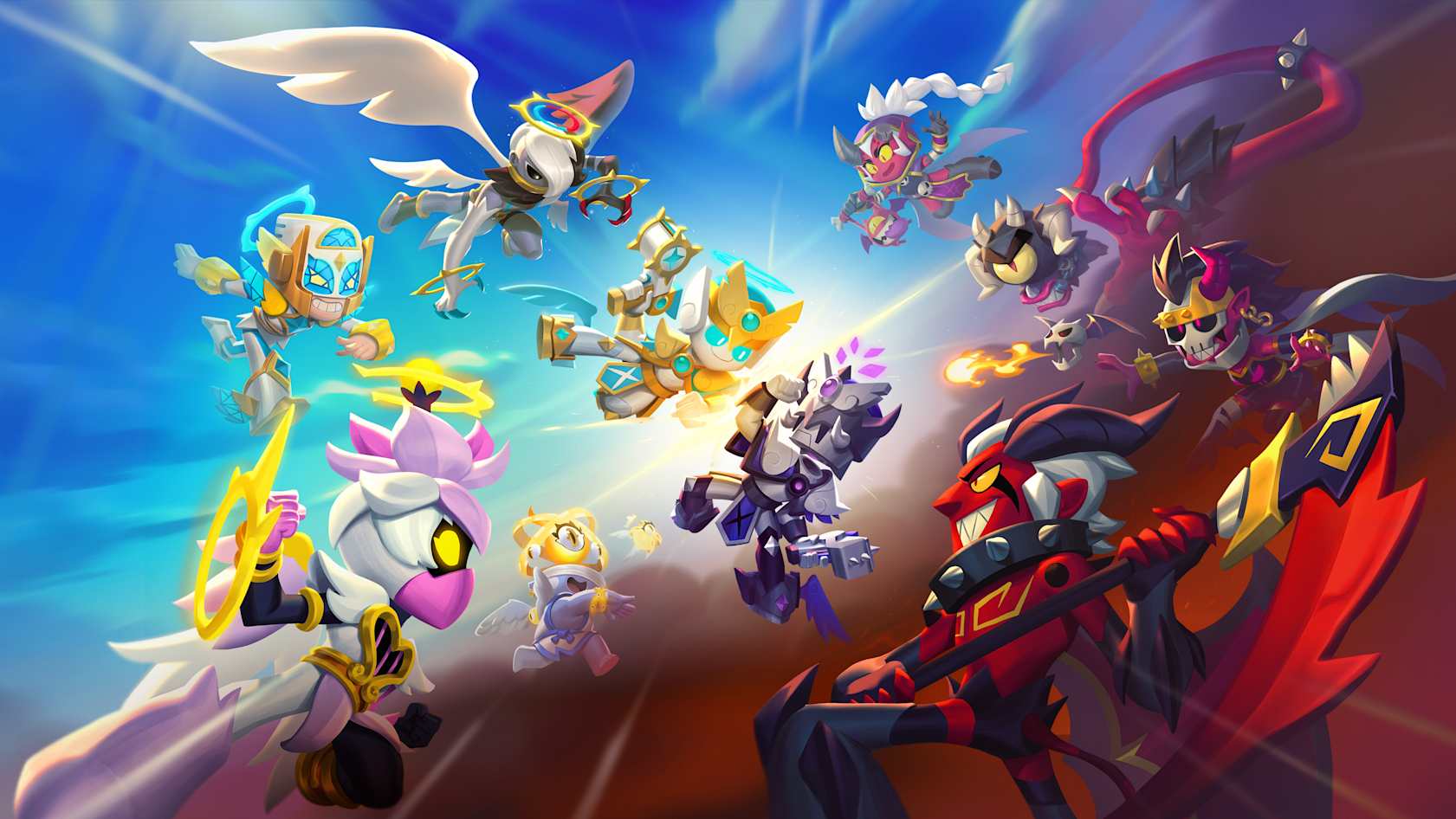
Financial year of 2024
Ahh yes, I’m sure some of you are curious about how this all translated into numbers. Finnish law requires us to publish our annual financials, and here I can do it with some commentary :)
This section requires some reading instructions. First, if you are all aboard with our forever mission, it’s nice for you to know that the numbers are pretty good this time. That will allow us to play the long game; keep on innovating and investing in the best games and teams – and take big risks in the future, too!
Second, we changed things a bit. We decided to share the financial figures “without deferral” to give a more transparent view on what our year actually looked like. With deferrals, many of the purchases don’t show in 2024 numbers due to the mechanics and rules of how they need to be marked in the books.
Here are the results:
Revenue before deferral of €2.8 billion or $3.0 billion, up 77% (€1.6 billion in 2023)
EBITDA before deferral of €876 million or $947 million, up 78% (€492 million in 2023)
Corporate taxes of €41 million paid in Finland
These numbers aren’t only a testimony to all the great work Supercellians did in 2024, they are also the function of the hard work that happened in the years before, and our culture of independence and responsibility of the teams, working toward our forever mission, and patience – and luck of course.
Thank you
So, last year was definitely something. I really want to say THANK YOU to all the Supercellians for all your efforts in putting our players first and shooting for the moon - and killing your darlings that do not seem to meet your very high bar. Thanks to all of our Creators, your work helps us to be remembered forever. Last, but actually first – thank you, hundreds of millions of players, who, day after day, choose to play our games and give us the opportunity to create new experiences for you to explore.
Ilkka
